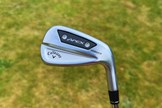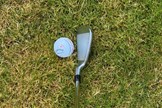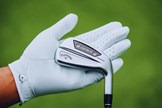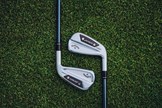Are these the most complete game improvement irons for feel, power and consistency? Callaway Apex Ai300 Irons Review
Last updated:
-
At a glance
- TG Rating
- Owner Rating
-
Pros
- Soft feel
- Sleek design
- Thicker top line to encourage confidence
- Longer shaft to encourage increased club head speed -
Cons
- Slightly higher price point than most game improvement sets
What we say...
The new Callaway Apex Ai300 irons are designed to be more ‘game enjoyment’ than ‘game improvement’, but just how good is this latest iteration of the Apex range? Today’s Golfer finds out.
Callaway are known for making some of the best golf irons, and that reputation continues with their latest releases. The new Apex Ai300 Irons have been designed for incredible feel, increased power, and shot consistency. The stylish cavity-back irons feature a profile that lends itself to the game improvement irons category by combining performance and forgiveness in one.
A forged cavity-back club head design combined with a forged 455 club face creates a Tour-level sound and feel, as well as delivering outstanding power across the club face.
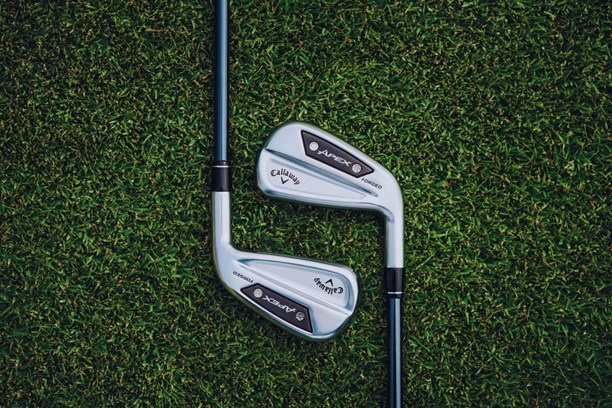
The Apex Ai300 achieves incredible consistency through the Ai Smart Face. Using real golfer swing data combined with artificial intelligence, the Ai Smart Face generates outstanding speed and spin consistency with tight dispersion and a flight that encourages the golf ball to stop easily on the green.
Strategically positioned MIM (metal-injection moulding, a process that results in dense, precise weights for the club head) weighting ensures the ideal Center of Gravity for the best launch angle possible.
Designed for incredible feel, increased power, and shot consistency.
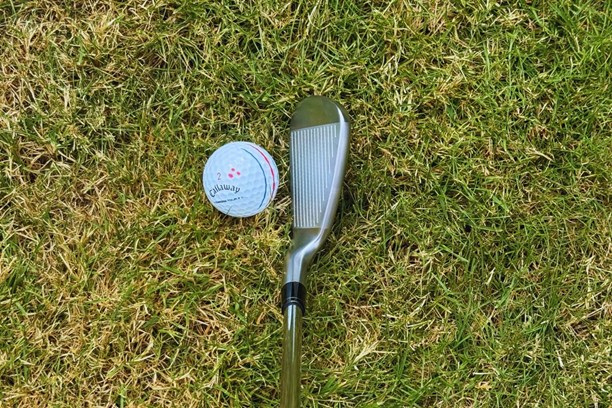

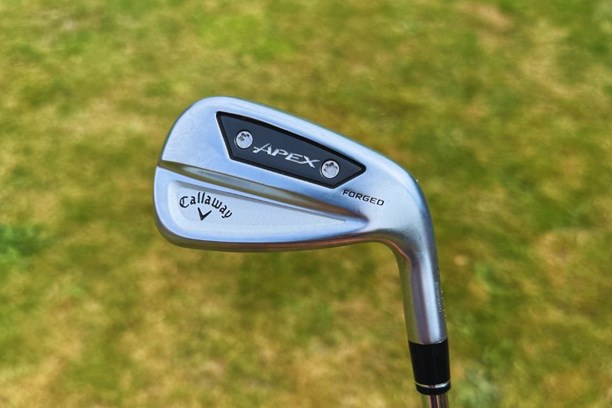
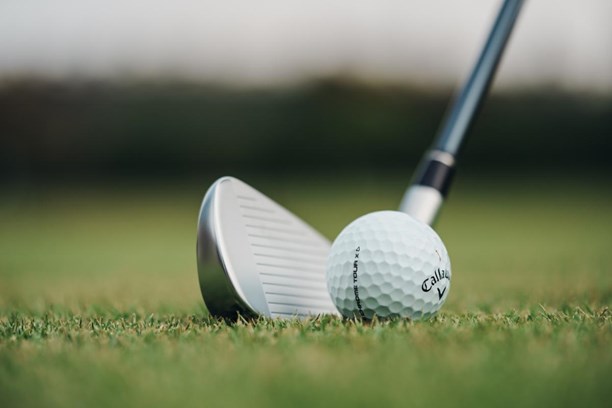
Pros
- Super soft feel and sleek design
- Longer shaft to encourage increased club head speed
- Thicker top line to encourage confidence
Cons
- Slightly higher price point than most game improvement sets
Initial thoughts
When Callaway first revealed the Ai200 and Ai300 irons, they felt both brand new and very familiar at the same time. Callaway have taken the Apex design that was first introduced in 2014 and constantly developed it throughout the last ten years to bring us their most recent model.
Ai300 incorporates new technology within the club face, but the irons do retain design features that have been present in all of the Apex models in the last ten years. I felt like I was looking at an already tried and tested golf club, and was very excited to see their capabilities.
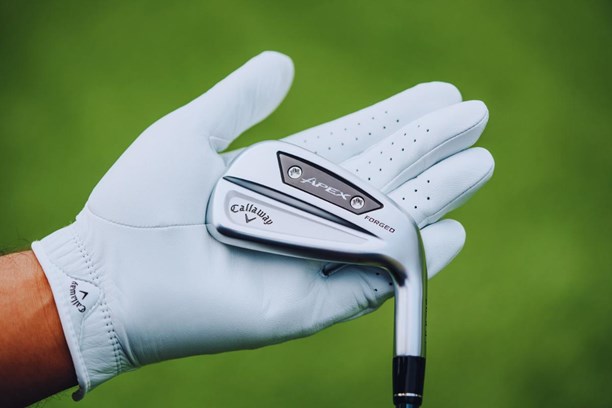
Look and Feel
The Callaway Apex Ai300’s feature a slightly larger club head than the Apex Ai200’s, and a thicker top-line. They immediately looked very forgiving, especially as they have a noticeable off-set from the shaft, which helps to promote a straighter ball-flight for golfers who tend to hit a left-to-right ball.
The design of the club head looked like it would promote forgiveness right away, as I could visibly see the way the weight is distributed into the back and bottom of the head, ideal for getting the ball up in the air.
The Ai300 felt a little bit longer than the Ai200’s, and where length helps with club head speed thanks to producing a larger swing arc, this really showed me how these irons have been engineered to appeal to the slightly higher handicap golfer.

Performance
The Callaway Apex Ai300 irons performed well for me during testing on the golf course. My ball flight was higher than usual, helped by the weighting in the head of the club, and shots into greens ‘dropped and stopped’ which showed me just how much more spin Callaway have in their updated Apex model.
Callaway say the Apex Ai range is designed to spin more and carry further, and they have definitely achieved that. They claim their Paradym iron range didn’t spin enough, the more recent Ai Smoke irons did have more spin, but now the Apex Ai sets the bar for them in terms of irons optimised for launch, spin and ball speed off the club face.
My iron shots with the Ai300 irons were longer than usual distance wise, but not quite as long as I achieved with the Ai200 irons, and dispersion was pretty tight and consistent when I hit a range of shots with each iron in the set.

Forgiveness
On the golf course the Ai300’s didn’t fly quite as high or as long as the Ai200’s for me, but they were definitely forgiving.
I hit a couple of practice shots into a par-3 hole slightly off the toe, and they didn’t pull as far left as I would have expected, instead my ball landed on the left edge of the green. This is something that wouldn’t happen with my current set of irons, and it gave me even more confidence standing over the ball with them.
Callaway have spoken about these as being ‘game enjoyment’ irons, and they will appeal to the more regular, but slightly higher handicap golfer.
Final Verdict
The Ai300’s were by far a step above the irons I’m currently using. They were forgiving on off-centre shots, and they looked confidence-inducing behind the golf ball. The thicker top-line of the club head and the shape of the sole made me feel as if they were going to pop the ball in the air easily.
I was also very impressed with how much spin these irons gave me, with shots into greens stopping much faster than I’m used to. This allowed me to attack the pins more, as I didn’t need to allow for as much run on the golf ball.
In the hands of our test pro
As part of our best Callaway Iron test sessions, we also put the Apex AI300 in the hands of TG Test Pro Neil Wain. Below is a data chart to show how the model faired against the rest of the Callaway iron family and a selection of competitor models.
With extra hosel offset, a more reassuring topline thickness, and additional head size the Apex Ai300 is unmistakably a game-improver model, in fact, its profile is not too dissimilar to the Ping G430. The Ai300 challenges what forged irons deliver to club golfers as undoubtedly some will question whether mid-handicap golfers will feel a difference between this and the cast Callaway Ai Smoke. If you feel there’s a benefit to playing premium forged irons, then absolutely the Ai300 will be the better option.
In the hands of our test pro the slightly weaker Ai300 compared favorably with the Ai Smoke, I believe many club golfers will appreciate the slightly higher spin (343rpm) and steeper descent angle (0.5°) performance of the Apex, especially so at average speeds. Despite a slight loft difference, there’s very little to choose between the two in terms of ball speed or carry distance numbers, so you’ll be leaving nothing on the table whichever way you proceed.
Hopefully, you’re not sitting on the fence between the Game Improver Ai300 and Players’ Distance Ai200. If you are our data spells out you can expect to see a 1.2mph slower ball speed, 432 rpm more spin, and a steeper landing angle performance in exchange for 4 yards less 7-iron carry distance by opting for the Ai200. If distance is your number one priority the Ai300 should be your first port of call.
Data comparison: How the Apex AI300 compares in data to the rest of the Callaway iron family
| 7-Iron Loft | Ball Speed | Launch Angle | Backspin | Peak Height | Descent Angle | Carry Distance | Shot Area | |
| Callaway Apex 24 MB | 34° | 116.5 MPH | 16° | 6293 RPM | 28 YDS | 44.4° | 163 YDS | 254.4 SQ YDS |
| Callaway Apex 24 CB | 34° | 121.4 MPH | 15.1° | 6465 RPM | 29 YDS | 45° | 170 YDS | 265.2 SQ YDS |
| Callaway Apex 24 Pro | 33° | 124.6 MPH | 14.5° | 6598 RPM | 30 YDS | 45.4° | 175 YDS | 387 SQ YDS |
| Callaway Apex AI200 | 30° | 126.7 MPH | 13.9° | 5775 RPM | 30 YDS | 44.3° | 182 YDS | 157.3 SQ YDS |
| Callaway Apex Ti Fusion | 30.5° | 127.8 MPH | 13.2° | 6078 RPM | 29 YDS | 44.1° | 182 YDS | 178 SQ YDS |
| Callaway Apex AI300 | 29° | 127.9 MPH | 14° | 5343 RPM | 30 YDS | 44° | 186 YDS | 233.8 SQ YDS |
| Callaway Paradym AI Smoke | 28° | 128.1 MPH | 13.9° | 5000 RPM | 30 YDS | 43.5° | 188 YDS | 125.1 SQ YDS |
| Callaway Paradym AI Smoke HL | 30° | 126.4 MPH | 14.8° | 5452 RPM | 32 YDS | 45.2° | 181 YDS | 103.8 SQ YDS |
Also Consider
If you’re a regular golfer wanting to enjoy the game with higher ball-flights and the ability to stop the ball on the greens more often, then the Ai300’s will be great for you. If you want a slightly better player iron, with less offset and even more spin, then the Ai200’s would be a great choice.
About the author

Sarah Pyett – Deputy Digital Editor
Sarah Pyett is the Deputy Digital Editor of todays-golfer.com. She plays off a handicap of 4, and specializes in ladies’ equipment reviews, including drivers, irons, and golf balls.
After a career in a golf professional shop, and earning a qualification in golf club management, Sarah joined Bauer in 2014 as a Web Producer for Today’s Golfer. She has since worked across multiple brands in a mixture of digital marketing and paid media roles, before returning to focus on golf full-time as Deputy Digital Editor in 2024.
RRP: £1199 Steel, £1299 Graphite
Shaft: True Temper Dynamic Gold Mid 100 (Steel), UST HDC Recoil Dart 80 (Graphite)
Grip: Golf Pride Z-Grip





